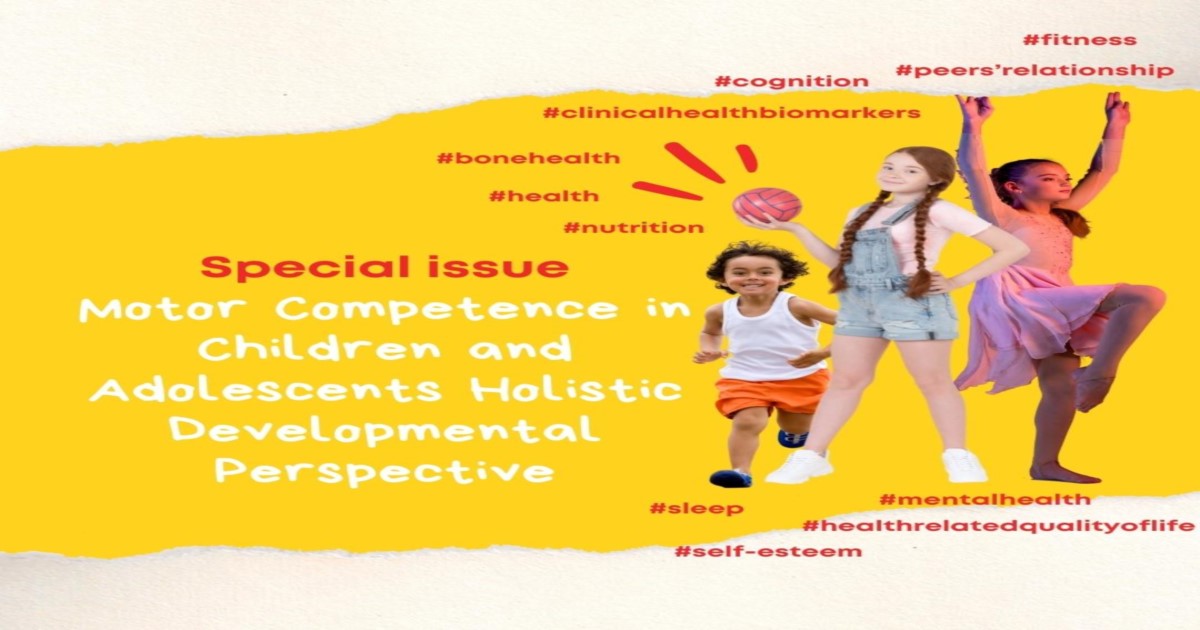- 2.1Impact Factor
- 3.8CiteScore
- 16 daysTime to First Decision
Motor Competence in Children and Adolescents Holistic Developmental Perspective
This special issue belongs to the section “Global Pediatric Health“.
Special Issue Information
Dear Colleagues,
In the early childhood years, becoming more competent in different movement skills is essential to engage in physical activity. Indeed, the ability to be proficient in a broad range of locomotor, stability, and manipulative skills can influence children’s lifelong physical activity habits and, consequently, their health status.
In this context, knowledge has progressed much in recent decades. Thanks to the joint efforts of different research areas, we now have a better understanding regarding the relationship between children’s motor competence and other motor variables (physical activity, physical fitness, perceived motor competence, strength, and some health markers) in several contexts (sports, schools, playgrounds). However, research is scarcely relative to understanding motor competence in a more holistic developmental perspective, encompassing variables such as nutrition, psychological variables, social relationships, and clinical health biomarkers.
The goal of this Special Issue in Children is to highlight recent and new advances in this holistic developmental perspective related to this amazing period of childhood. The intended scope of the Special Issue is broad enough to accommodate different areas of expertise and research; therefore, this Special Issue seeks to highlight the relationship between motor competence and different variables, such as clinical health biomarkers, nutrition, quality of sleep and life, peers’ relationship, and even self-esteem throughout the lifespan.
New research articles, reviews, and case reports are welcome in this Special Issue.
We look forward to receiving your contributions.
Dr. Carlos Luz
Dr. An De Meester
Guest Editors
Manuscript Submission Information
Manuscripts should be submitted online at www.mdpi.com by registering and logging in to this website. Once you are registered, click here to go to the submission form. Manuscripts can be submitted until the deadline. All submissions that pass pre-check are peer-reviewed. Accepted papers will be published continuously in the journal (as soon as accepted) and will be listed together on the special issue website. Research articles, review articles as well as short communications are invited. For planned papers, a title and short abstract (about 250 words) can be sent to the Editorial Office for assessment.
Submitted manuscripts should not have been published previously, nor be under consideration for publication elsewhere (except conference proceedings papers). All manuscripts are thoroughly refereed through a single-blind peer-review process. A guide for authors and other relevant information for submission of manuscripts is available on the Instructions for Authors page. Children is an international peer-reviewed open access monthly journal published by MDPI.
Please visit the Instructions for Authors page before submitting a manuscript. The Article Processing Charge (APC) for publication in this open access journal is 2400 CHF (Swiss Francs). Submitted papers should be well formatted and use good English. Authors may use MDPI's English editing service prior to publication or during author revisions.
Keywords
- children motor competence
- psychological variables
- clinical health biomarkers
- social relationships
- nutrition

Benefits of Publishing in a Special Issue
- Ease of navigation: Grouping papers by topic helps scholars navigate broad scope journals more efficiently.
- Greater discoverability: Special Issues support the reach and impact of scientific research. Articles in Special Issues are more discoverable and cited more frequently.
- Expansion of research network: Special Issues facilitate connections among authors, fostering scientific collaborations.
- External promotion: Articles in Special Issues are often promoted through the journal's social media, increasing their visibility.
- e-Book format: Special Issues with more than 10 articles can be published as dedicated e-books, ensuring wide and rapid dissemination.

